Architecture
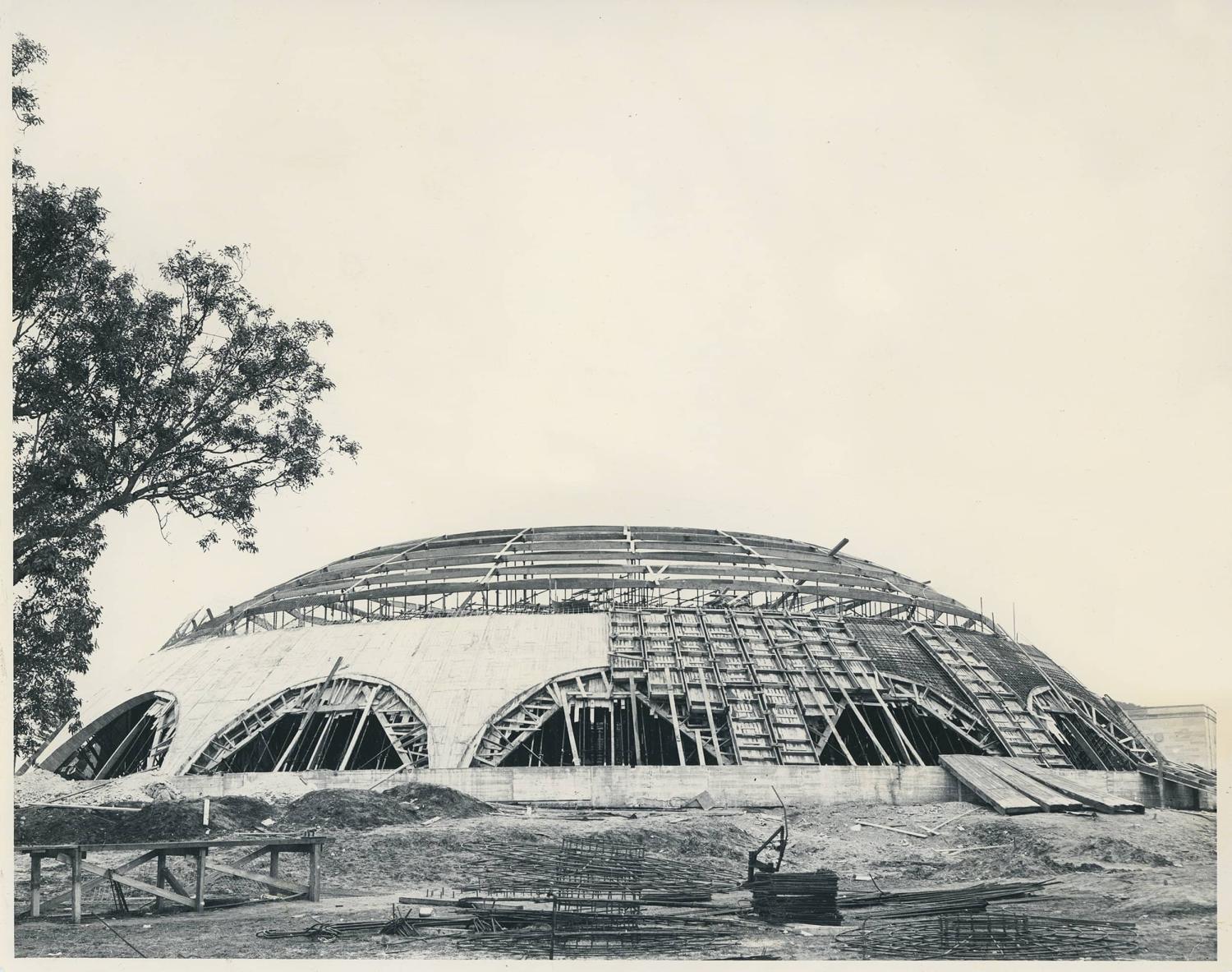
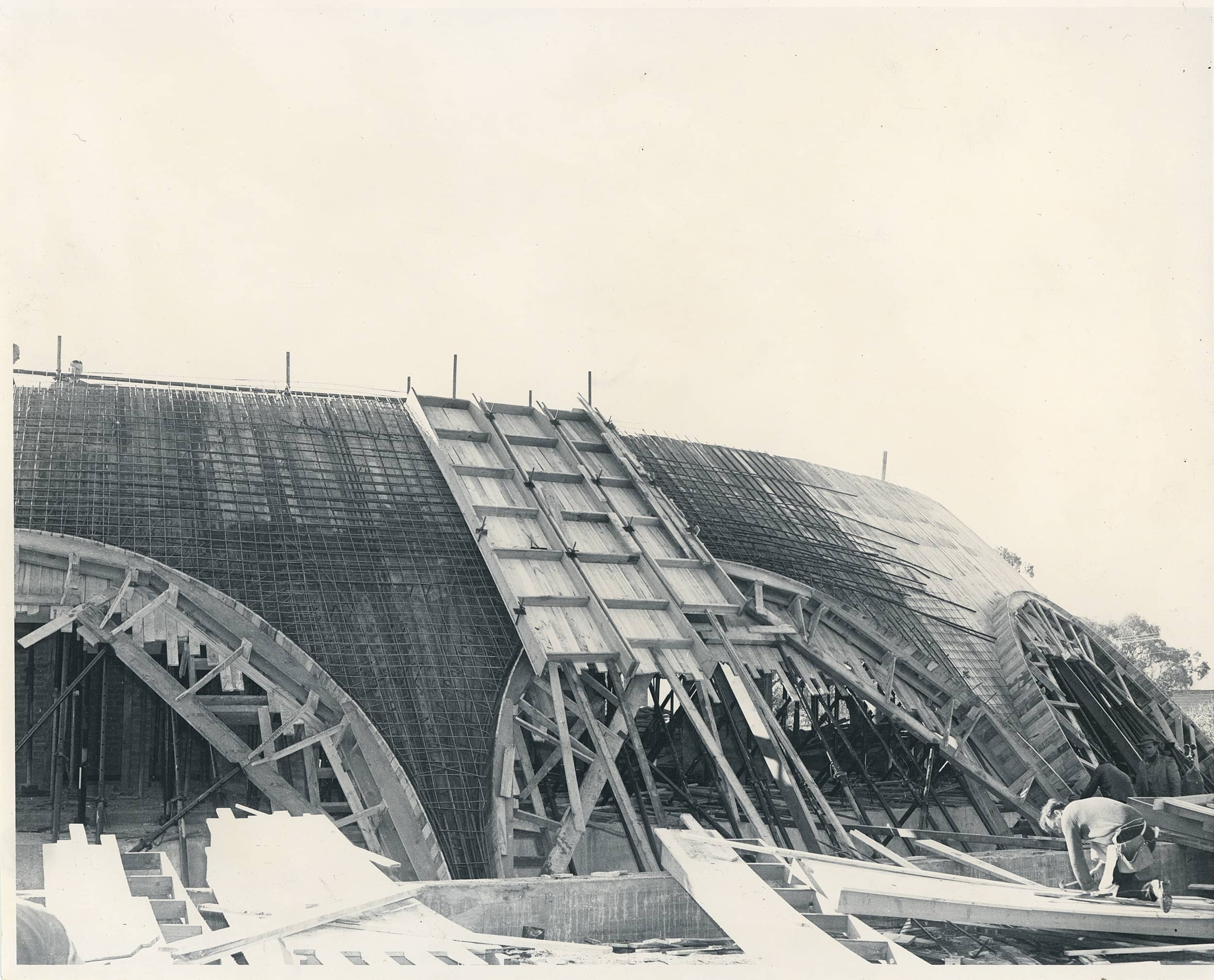
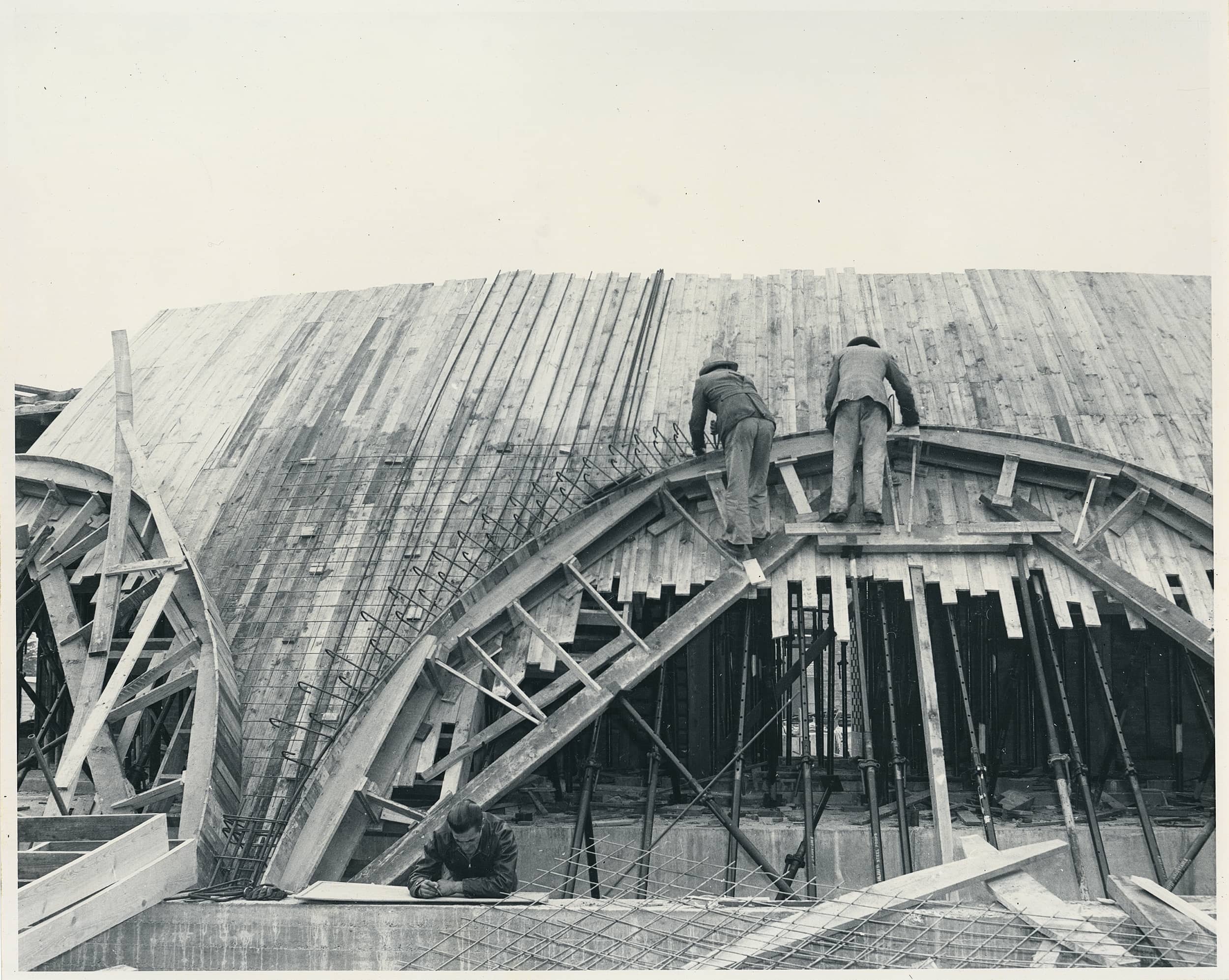
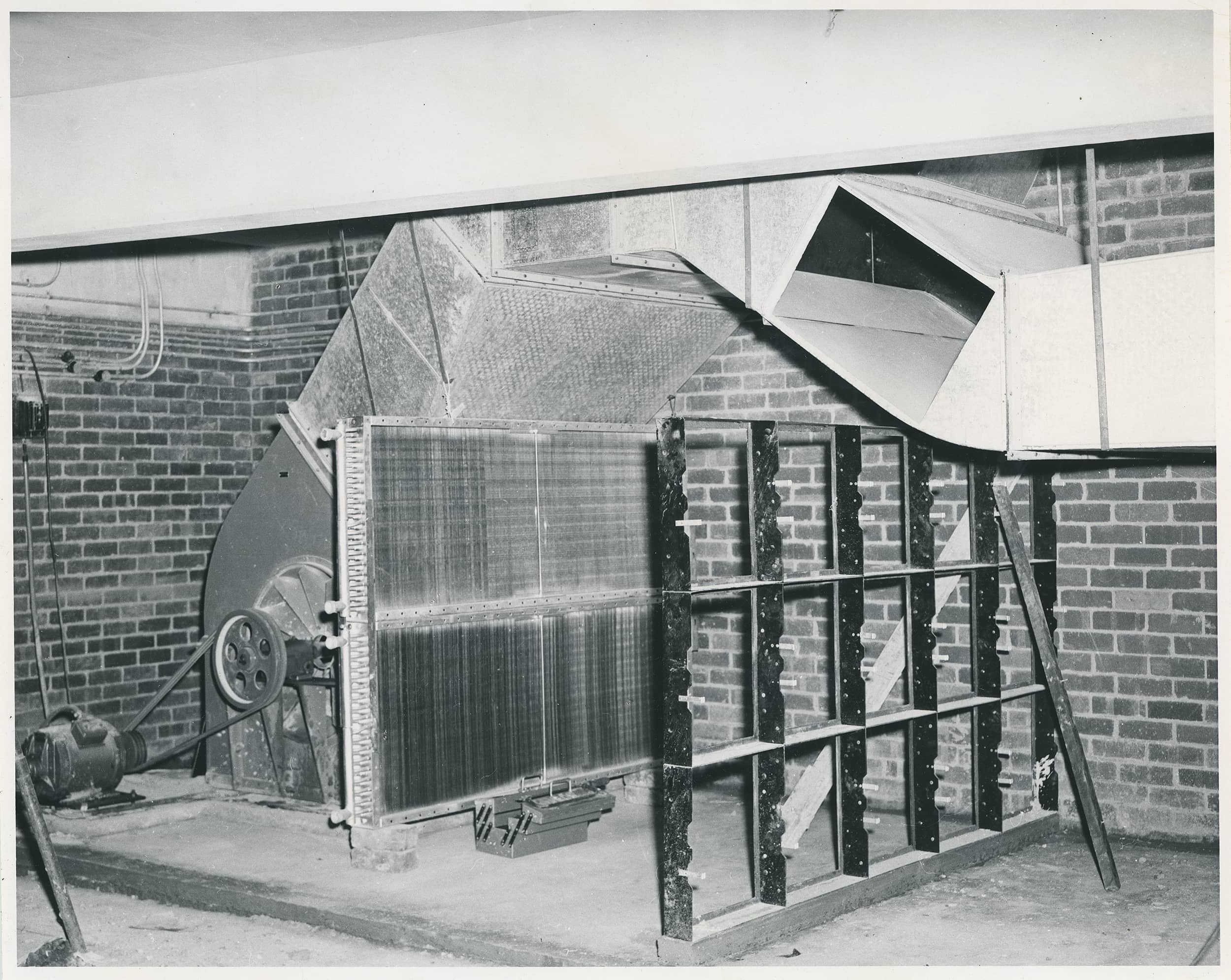
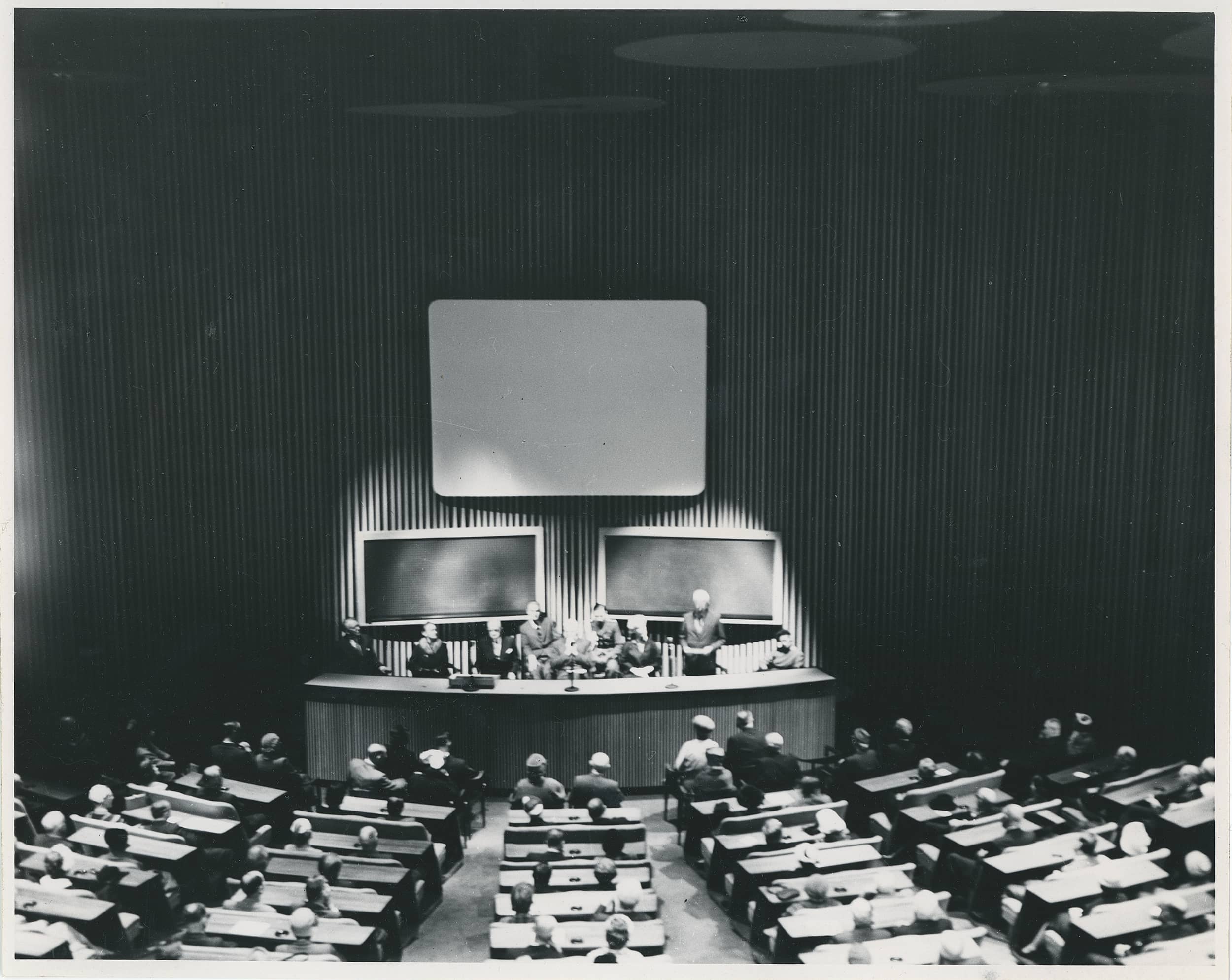
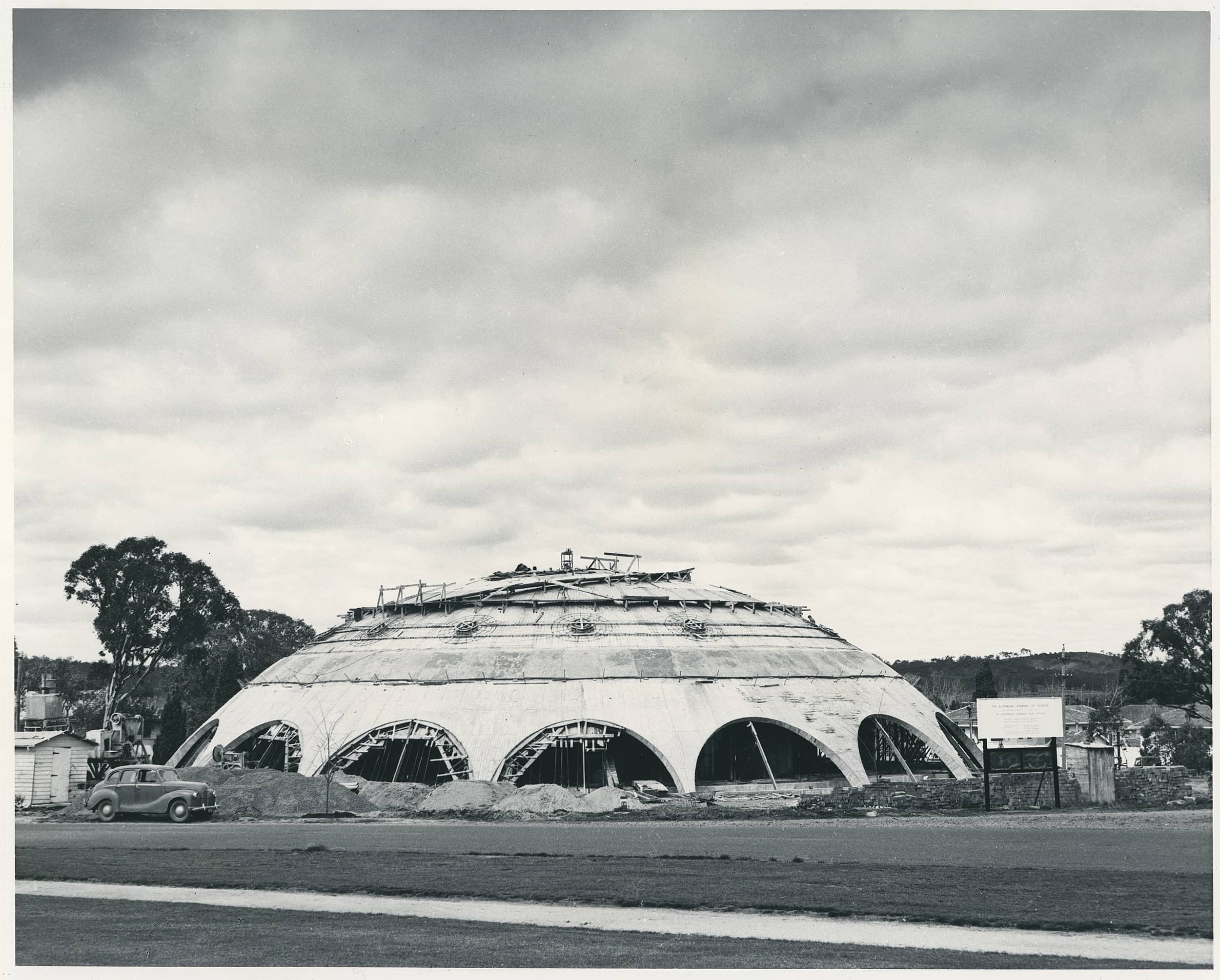
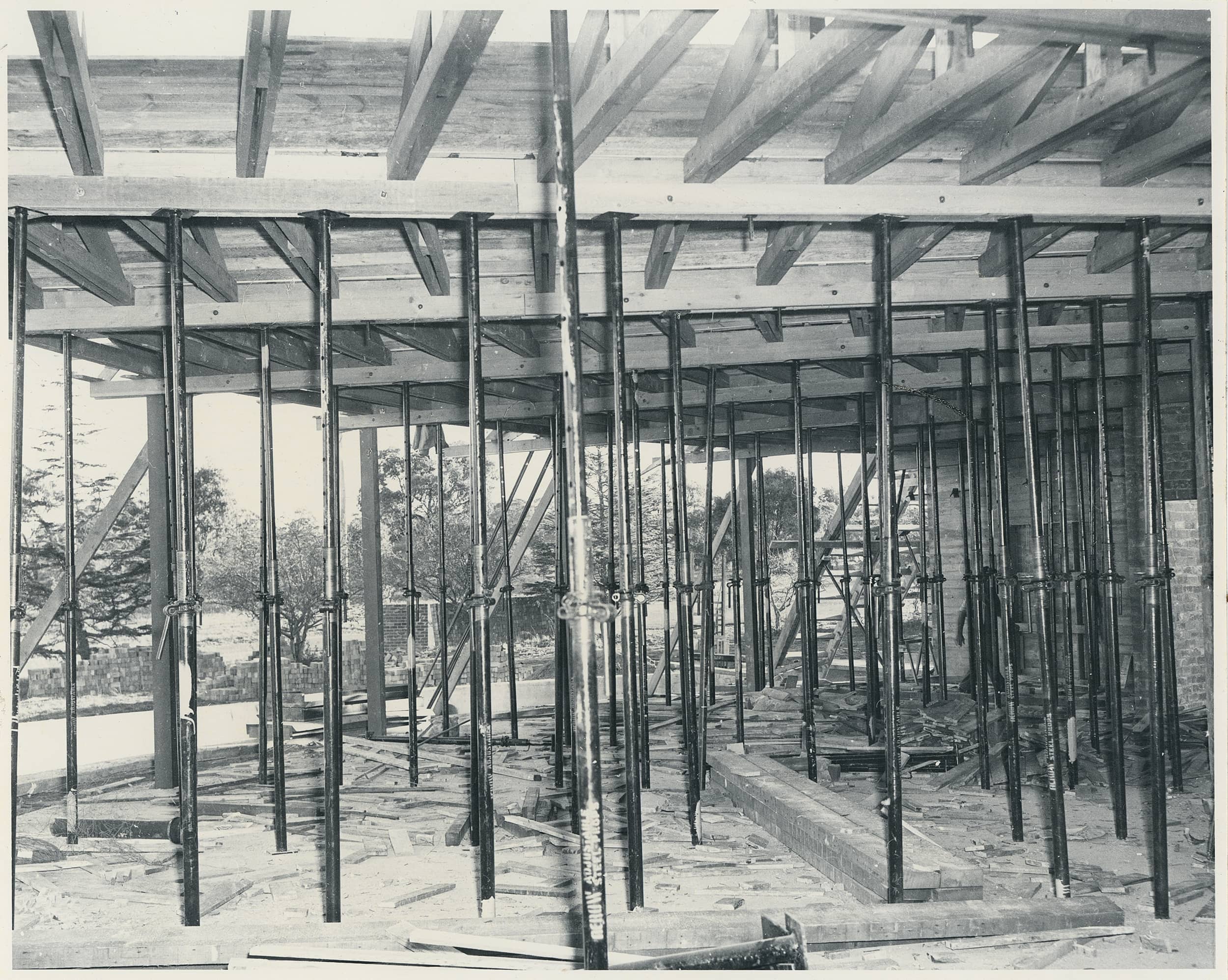
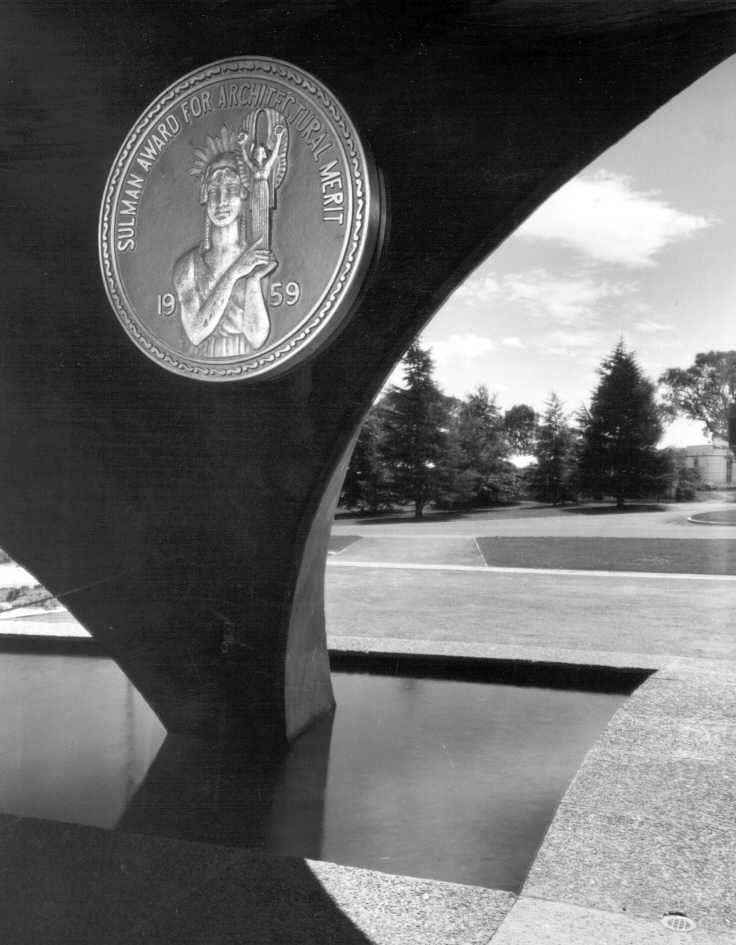
Although the original citation is not available, the following information is taken from Andrew Metcalf’s book, Architecture in transition—The Sulman Award 1932–1966, with permission of the author.
Roy Grounds’ light shone early, burnt brightly and always laid down a different beam. By 1928 he had finished an indentureship training, won a housing competition with Geoffrey Mewton and been awarded an Institute of Architects travelling scholarship. Unencumbered by the classical architectural education that would have been normal for the time, he sat down to plan a trip and came up with the USA – not just the USA but tinsel town: he spent the next two-and-a-half years working as a set designer for RKO and MGM studios. Although we have little idea of what he did specifically, if ever there is an industry where anything is possible and dreams come true, it is the film industry. With this background and a well-known fascination with circular and triangular geometry, Roy Grounds eventually matured into one of Australia’s more noticeable architectural individualists. On the way his partnership with Mewton revived and then closed between the wars and he eventually teamed up with Frederic Romberg and Robin Boyd in the early 1950s.
The Australian Academy of Science project was Grounds’ first large building: its brief called for a large conference hall with raked seating, council room, offices and a fellows’ room being the second-largest space. Grounds rather deftly moulded all of this into a simple circular plan with circumferential circulation inside and out, and housed it all in a concrete, copper-clad dome. To contain the dome’s lateral spreading he devised a massive concrete ring beam (built as a moat) that straps everything together like the hoop on a wine barrel.
This building is part of a rash of domes built internationally in the 1950s and 1960s like Saarinen’s Kresge Auditorium at MIT and later, Nveri’s large stadiums in Italy. In historical terms Grounds’ dome was one of the early ones and today it functions precisely as designed. All of the interior details and materials have somehow managed to stand the test of time and yes it still works.
Name of building: Becker Building [Shine Dome]
Address: Gordon Street, Canberra City, ACT, 2601
Date of listing: May 1984 Listing status: Registed
Block: 25 Section 75 Division: City
Category: Institutional (Scientific)
Style: Structuralist
Date of citation: May 1985
Revision no: 7
Designer: Roy Grounds of Grounds, Romberg & Boyd, Architects; W E Bassett & Assoc. (Mechanical); Bolt, Beranek & Newman (USA) (Acoustics); Rider, Hunt & Partners (Quantity Surveyors); W L Irwin & Assoc, Design Department (ANU); Department of Engineering, University of Melbourne
Date of design: pre-1956
Client/owner/lessee: Australian Academy of Science
Builder: Civil & Civic Contractors Pty Ltd
Level of significance: National
Completed in 1959 and reflecting some of the more adventurous architectural ideas of that time, the Shine Dome (previously known as Becker House) remains one of the most unusual buildings in Australia. The dome—roof, walls and structure combined—dives down beneath the still water of its moat to give the sense that it is floating. From the walkway between the moat and the inner walls, the arches provide a 360° panoramic sequence of 16 views of the capital city and the hills beyond.
1958
Statement of significance: Displays, in a most innovative manner, an exemplary understanding of the time, place and requirements for Canberra. A significant example of Australian architectural achievement which has become a symbol of Canberra. A finely conceived and executed synthesis on an uncompromising envelope and a specific function. The careful detailing is of a very high quality, internal details are designed specifically for the function contained, and the carefully detailed furnishings and fittings contribute to the good acoustics. The design complements its setting and reflects its Canberra environment of rounded hills. Won the 1959 Sir John Sulman Award, RAIA NSW Chapter, and the 1961 Canberra Medallion, RAIA ACT Chapter (the only ACT building to win two awards).
Description: A shallow arcaded concrete dome, sheeted in copper. Peripheral arches in the dome spring from a moat which serves as a ring beam. Integral, formed plywood seating reflects the circular interior. Auditorium (Becker Hall) [renamed the Wark Theatre] seats approximately 156. The Adolph Basser Library is situated in the top of the dome. The copper-sheathed concrete dome, 46 meters in diameter, weighs 710 tonnes and rests on 16 arches. When opened, the building was described as being of "unconventional, futuristic design". The Academy of Science was established by Royal Charter in 1954. Its Fellows are eminent scientists in physical or biological sciences. An original notice described the building as 'Conference Chamber and Offices'.
Condition: Building; sound. Some staining showing, Interior; reasonable. [Renovated in 2000-2001]
Documentation:
Photographs: Yes
References: AIA, CG, GCB Nominator: RSTCA committee Name: P J Corkery Address: 24 Ambalindum Street, Hawker, ACT Firm: CCAE. SED Phone no.: (06) 252 2580
The Shine Dome is one of seven projects which the Royal Australian Institute of Architects has nominated to the World Register of Significant Twentieth Century Architecture, 2000.
Significant buildings of 20th Century
The Shine Dome is one of seven projects which the Royal Australian Institute of Architects has nominated to the World Register of Significant Twentieth Century Architecture, 2000.
The distinctive Dome structure was designed by Sir Roy Grounds, and after its completion, became a major Canberra landmark. The quality of the design was recognised by its award of the 1959 Sulman Medal by the RAIA, and the Meritorious Architecture award for the Canberra area in the same year. The design addresses the objectives of the design of the National Capital, with a form and colour that blends into the tree canopy and topography. The dome is an innovative structure, reflecting the bold modernism of the era, but sensitively complementing the surrounding landscape. A circular moat surrounds the building, providing an emphasis with the natural setting. The circular form continues into the interior, with curved walls and spaces emphasising the geometry of the roof. Interiors reflect the muted, natural tones of an emerging new fashion.
The dome continues to be a striking contribution to the architectural character of the city. It continues its original use, successfully serving the needs of the Academy, and stimulating the visiting public.
The prime architectural purpose for this award is to reinforce to the profession and inform the public that what we build makes a significant contribution to the built environment and creates the cultural heritage of this city.
The 25 Year Award is made in the present, so it goes to buildings which serve their user and society well in their present form. Inherent in the award is a recognition of changes both in society and in architectural response. All things date, and the award codifies not only changes in fashion and taste but also changes in the expectations of client and society.
There are three areas in which the contribution of the building is to be measured:
-
Form/function context
Was it (and is it) a good response to its program? Did such things as the planning, external form and internal spaces meet the expectations of the promoter and society at the time and does it continue to do this? Did it (and does it) sit well in its environment? -
Construction/materials/finishes/craftsmanship
Is it well built, using materials appropriately? Innovation versus traditional techniques and materials are commented on, but the real test is whether it was well put together. Does its construction and finish indicate care and skill, and how has it fared as an object of use? -
Architectural integrity
If it meets criteria 1 and 2, does it have an added value as a cultural symbol? Does it have an intrinsic worth through form or style, or as an example of architectural development in theory or construction? Does it merit special note because it adds to Canberra heritage in its form or setting or by its contribution to a particular building type—is it a good example of its type?

